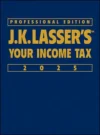Covid-19 and Your Taxes
The worldwide pandemic—Covid-19—has changed everything…taxes included. Congress has enacted a new law (Families First Coronavirus Response Act, H.R. 6201, or “the Act”), to provide economic support to families and individuals affected by the virus and its containment measures. The IRS is also doing what it can to provide some relief.
Extended time to file 2019 returns and pay 2019 taxes
The IRS has changed the filing deadline for 2019 income tax returns for individuals, which normally is April 15, 2020 (“Tax Day”), to July 15, 2020. No special form needs to be filed if you can meet this extended deadline. But if you want more time…to October 15, 2020…you need to request an extension (use Form 4868 for this purpose). Caution: Watch for state income tax deadlines, which may not have been changed.
Prior to the COVID-19 emergency, taxes for 2019 had to be paid by individuals no later than April 15 or late-payment penalties would begin to accrue. In light of COVID-19, the IRS has also extended the payment deadline to July 15, 2020. Deferred taxes can include the 2020 estimated tax payment that is due April 15, 2020.
Emergency paid leave benefits. The Act requires employers with fewer than 500 employees to give a certain amount of paid sick leave and paid family leave. Employers with fewer than 50 employees may claim an exemption if paying this leave threatens the viability of the business. There’s no comparable paid leave requirement for larger employers, although many already offer this benefit.
If you work for such a small or mid-sized employer, the amount of benefits you receive depend on your pay and the reason for the payment. The paid sick leave is for up to two weeks (10 days); the paid family leave is for up to an additional 10 weeks (subject to dollar limits). There are six situations identified in which an employee is unable to work or telework:
- The employee is subject to a Federal, State, or local quarantine or isolation order related to COVID-19;
- The employee has been advised by a health care provider to self-quarantine due to concerns related to COVID-19;
- The employee is experiencing symptoms of COVID-19 and seeking a medical diagnosis;
- The employee is caring for an individual who is subject to an order described in (1) or has been advised as described in (2);
- The employee is caring for the employee’s son or daughter if the school or place of care of the son or daughter has been closed, or the child care provider of such son or daughter is unavailable due to COVID-19 precautions; or
- The employee is experiencing any other substantially similar condition specified by the Secretary of Health and Human Services in consultation with the Secretary of the Treasury and the Secretary of Labor.
- Paid sick leave. If any of the first three conditions (numbers 1, 2, or 3) apply, an employee receives 100% of regular pay up to a maximum of $511 per day for 10 days, for an aggregate limit of $5,110.
- Paid family leave. If any of the final three conditions (number 4, 5, or 6) apply, an employee receives two-thirds of regular pay up to a $200 daily limit for 10 days, for an aggregate limit of $2,000.
Employers can take a payroll tax credit equal to what they give to employees in leave payments. The credit is taken as a reduction to payroll tax deposits. If leave payments to employees exceed required deposits, employers can ask for an accelerated credit.
Self-employed individuals are not eligible for the payments that employees receive; they aren’t employees. However, if they meet the conditions discussed earlier, they can take a refundable tax credit against their income tax. Again, various limitations apply, including having required documentation that is yet to be detailed.
Unemployment benefits. Due to closures of various businesses, there are many employees who are furloughed until companies get back to normal activity. They may be eligible to collect unemployment benefits. The Act provides expanded assistance to states for their unemployment benefit funds. Unemployment benefits are fully taxable. State law determines when unemployment benefits begin.
Health savings accounts. Having coverage through high deductible health plan (HDHP) is a prerequisite for contributing to a health savings account (HSA). Typically, HDHPs require you to exhaust the policy’s deductible before insurance coverage kicks in. However, as part of the nation’s response to the 2019 Novel Coronavirus (COVID-19), the IRS has ruled that HDHPs can cover testing for and treatment of the virus without causing the coverage to be disqualified (Notice 2020-15). This means that HDHPs can offer testing and treatment of COVID-19 without the application of a deductible or cost sharing.
Conclusion
Congress and the IRS are continuing to provide additional tax relief. The IRS has created a coronavirus landing page for updates on any changes it may announce. Additional changes will be posted here. Stay tuned!
Sources:
https://www.jct.gov/publications.html?func=startdown&id=5251



